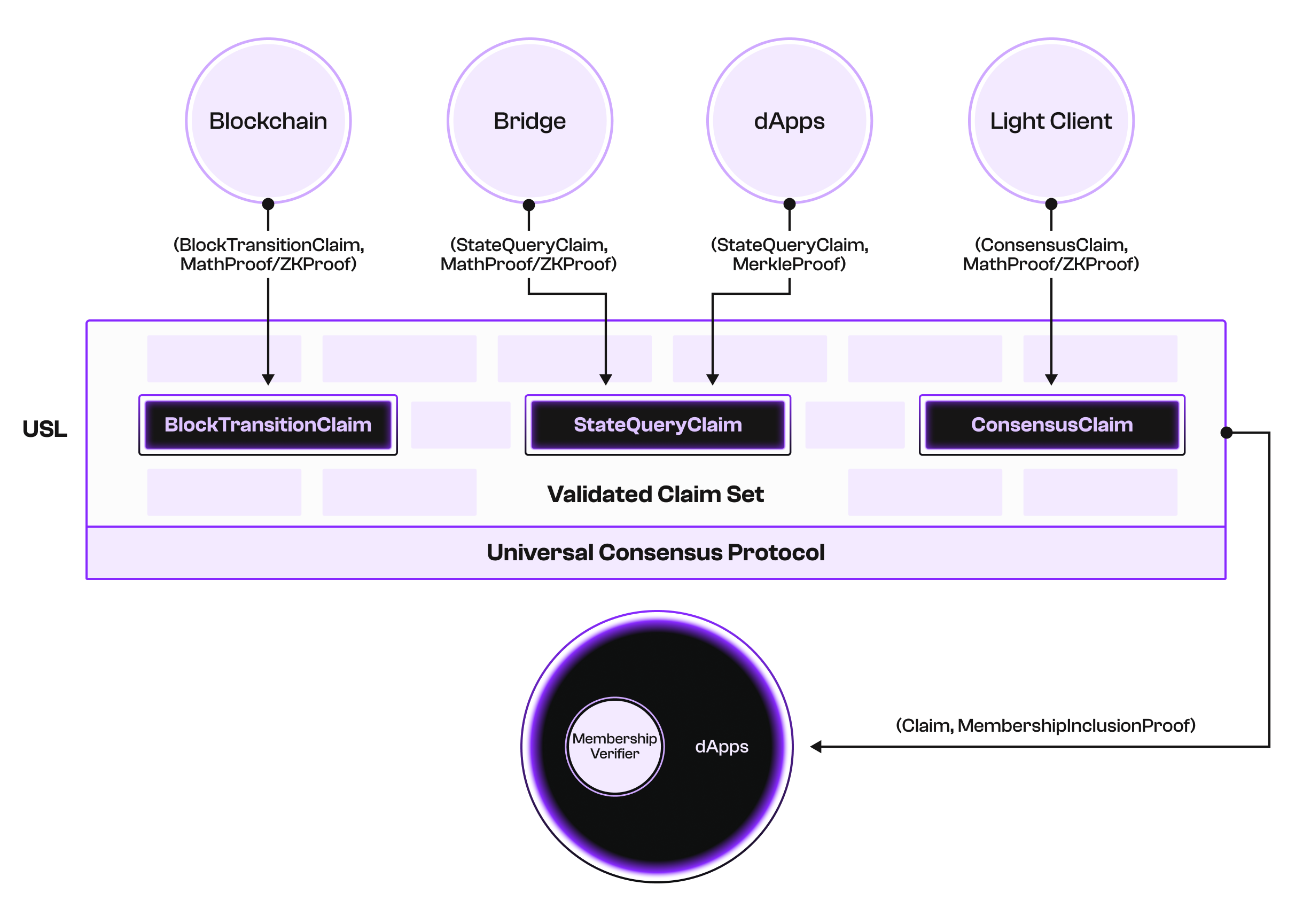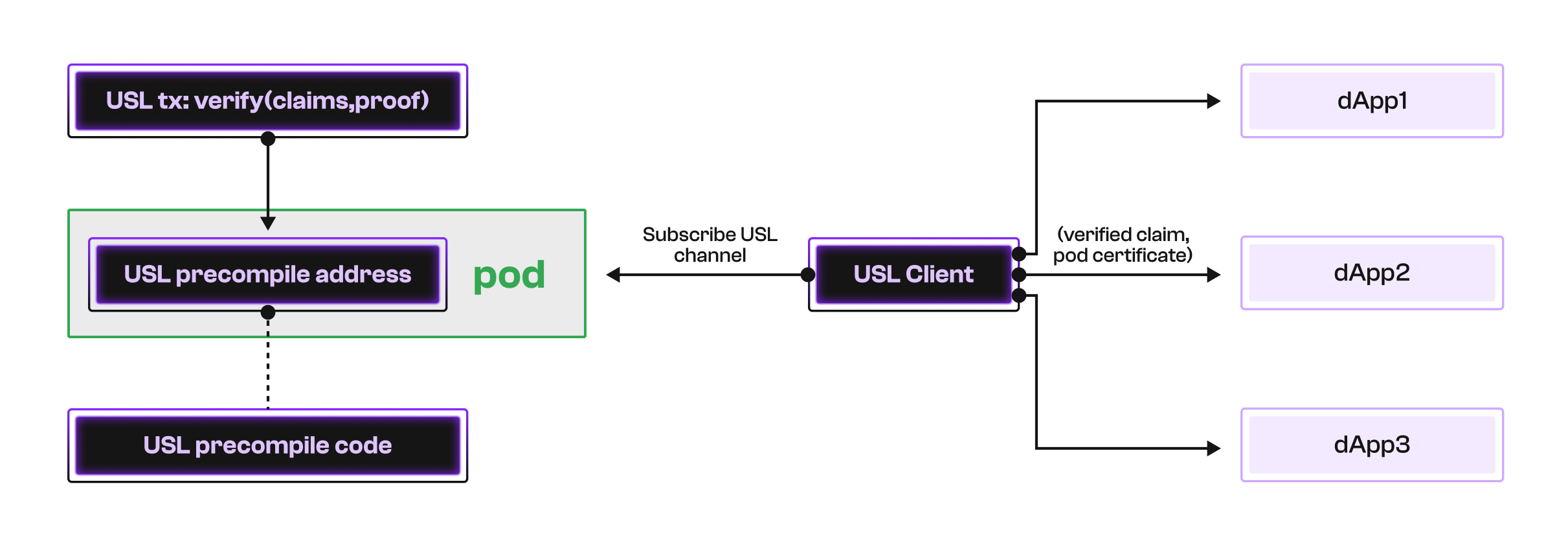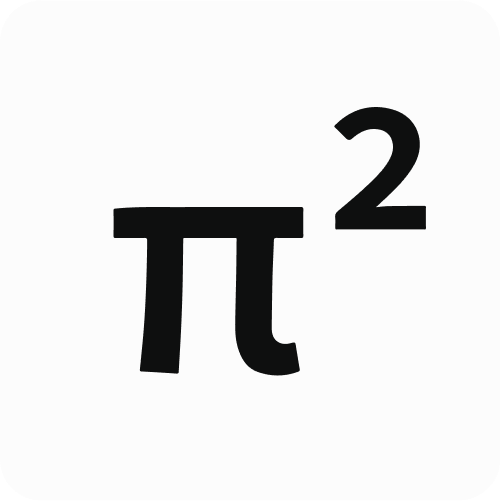Pi Squared + pod: Faster Finality and Trustless Verification
Faster finality, trustless verification and optimized speed. We explore why Pi Squared's USL + pod is a win for Web3 devs and users.

While blockchains promise decentralization, they come with frustrating trade-offs like slow finality, expensive transactions, and networks that crumble under real demand. For developers, this means building user-friendly applications remains a significant challenge.
pod takes a different approach. Instead of enforcing a rigid, total order of transactions like traditional blockchains, pod is a layer-one primitive designed for speed and efficiency. By embracing partial ordering, it removes unnecessary bottlenecks, allowing transactions to settle faster and scale better.
Now, Pi Squared is integrating pod into its infrastructure by deploying the smart contracts on the pod network. For a start, we’re using pod as the backend for our Universal Settlement Layer (USL), leveraging its performance to enhance how we handle transactions.
Let’s explore how this works and how it’ll benefit the Web3 community.
How will Pi Squared and pod work together?
Understanding pod
First, let’s break down what pod is all about.
As earlier stated, pod is a layer-one primitive, which is designed to take transactions as input and produce a log (a sequence of transactions) as output. Unlike traditional blockchains that enforce a total order of transactions, pod introduces a weak consensus protocol where transactions are only partially ordered. This means that while transactions are arranged in a sequence, their exact positions may shift slightly over time—a concept often referred to as "wiggle room."
By allowing for this flexibility, pod achieves both latency-optimal and throughput-optimal performance. It eliminates inter-validator communication, allowing clients to submit transactions directly to the network, where they are ordered in an efficient and scalable manner. This makes pod a powerful backend for decentralized applications that need high-speed, verifiable data without the bottlenecks of traditional consensus mechanisms.
Pi Squared’s Universal Settlement Layer (USL)
Now, let’s shift our focus to Pi Squared’s Universal Settlement Layer (USL).
The USL is Pi Squared’s solution to blockchain interoperability. It acts as a universal settlement layer that allows different blockchain ecosystems to communicate and validate information without relying on centralized intermediaries.
At its core, the USL is built around claims—mathematically provable statements that can be verified by various proof mechanisms. These claims cover a wide range of use cases, from verifying computation results to confirming blockchain states or transactions. Once verified, claims are permanently stored within the USL, forming a growing set of trusted data that different applications can query and use.
One of the key strengths of the USL is its flexibility: it doesn’t enforce any particular or specific proof mechanism. Instead, it’s configurable to work with any existing proof mechanisms, from the simplest validation-by-re-execution (as in traditional blockchains) to validation-by-proof-certificates (using zero-knowledge proofs or Proof of Proof). This allows developers to choose the verification method that best fits their needs while maintaining the benefits of a shared settlement layer.

The image above illustrates how different blockchain components interact with the USL. Blockchains, bridges, decentralized applications (dApps), and light clients submit various types of claims to the USL. Each claim is accompanied by a proof mechanism that ensures its validity.
Once inside the USL, these claims form a Validated Claim Set. After verification, the claims can be accessed by dApps via a Membership Verifier, which checks the inclusion of specific claims within the validated set.
Why USL and pod are a perfect match
The integration of pod with USL wasn’t just a technical decision; it was a natural fit that enhanced both systems.
The reason is that in USL, claims are self-contained. This means that they can be verified independently and in any order. Unlike traditional blockchain systems that require a strict sequence, USL maintains a validated claim set rather than a total-ordered claim list.
pod, on the other hand, achieves latency-optimal and throughput-optimal processing by weakening the total order requirement of transactions. That means, transactions in pod aren’t locked into a rigid sequence—they “wiggle” within a predictable range, ensuring speed without compromising integrity.
Because USL doesn’t require strict ordering for claim verification, integrating with pod allows USL to achieve faster finality. At the same time, pod generates certificates that confirm a claim’s verification and inclusion in the log. These certificates can then serve as membership inclusion proofs within USL, reinforcing trust and efficiency.
The integration: Using pod as the backend for USL
Now, here’s where things get interesting. Pi Squared is integrating pod as the backend for the USL component of its infrastructure. This means that when claims are generated within the USL, they will be stored, retrieved, and validated using pod's decentralized network.
How it works

- The USL claim verification logic is deployed as a contract on the pod network. A user calls the “verify” function with claims and proof on the USL contract.
- The pod protocol verifies the claim verification result and appends it to its logs.
- A USL client can subscribe to the events on the USL contract on pod, enabling it to track and query verified claims.
- The verified claim, along with its membership inclusion proof (pod receipt certificate), can then be used across various dApps.
By leveraging pod's storage and verification capabilities, the USL gains a more robust, scalable, and censorship-resistant backend. This integration enhances the reliability of cross-chain claims, ensuring that dApps and blockchain ecosystems can trust the data they query from the USL.
For now, more focus is on this backend integration, but this is just the beginning. The collaboration between Pi Squared and pod has the potential to evolve further, with more innovations on the horizon.
How this collaboration benefits the Web3 ecosystem
The integration between Pi Squared and pod introduces several key advantages for the broader Web3 space:
- Enhanced trust and security: With pod acting as a decentralized verification layer, dApps and blockchains can validate claims without relying on centralized intermediaries, reducing points of failure and censorship risks.
- Greater interoperability: USL facilitates seamless communication between different blockchain networks, enabling a more unified Web3 experience where assets, data, and applications can move freely across ecosystems.
- Scalability and efficiency: Instead of performing expensive on-chain computations, dApps can rely on pod's verified claims to access trusted data, reducing gas costs and improving performance.
- Developer flexibility: The USL’s support for multiple proof mechanisms, combined with pod's decentralized storage, provides developers with more options to build secure, cross-chain applications tailored to their needs.
Looking ahead
As stated earlier, while this integration is a significant step forward, it’s only the beginning. As Pi Squared and pod continue to collaborate, we can expect further innovations. The Web3 ecosystem is evolving, and partnerships like this will play a crucial role in shaping its future.
Our integration isn't just talk. See the fully functional demo presented at ETHDenver below.


